The Future of Architecture: Changing How Housing Is Built in the World’s Most Disaster-Prone Countries
This interview was conducted by Lisa Richmond. Architecture 2030’s mission is to rapidly transform the built environment from a major emitter of greenhouse gases to a central source of solutions to the climate crisis. For 20 years, the nonprofit has provided leadership and designed actions toward this shift and a healthy future for all.
Build Change is a global leader in systems change for resilient housing. The public benefit corporation coordinates engineers, builders, coders, policy advocates and lending partners to provide urgently needed housing solutions in the world’s most disaster-prone countries. Shifting power to families since 2004, Build Change has safeguarded over $4.7 billion in housing infrastructure assets across Latin America, the Caribbean and Asia-Pacific, improving the lives of over 1.17 million people by building new or retrofitting more than 230,000 buildings at the cost of $58 per safer person.
Architecture 2030’s Lisa Richmond caught up with Ariana Karamallis, Build Change’s Global Advocacy and Development Associate, to talk about what they do and what’s ahead in the work towards community resilience in the context of climate change.
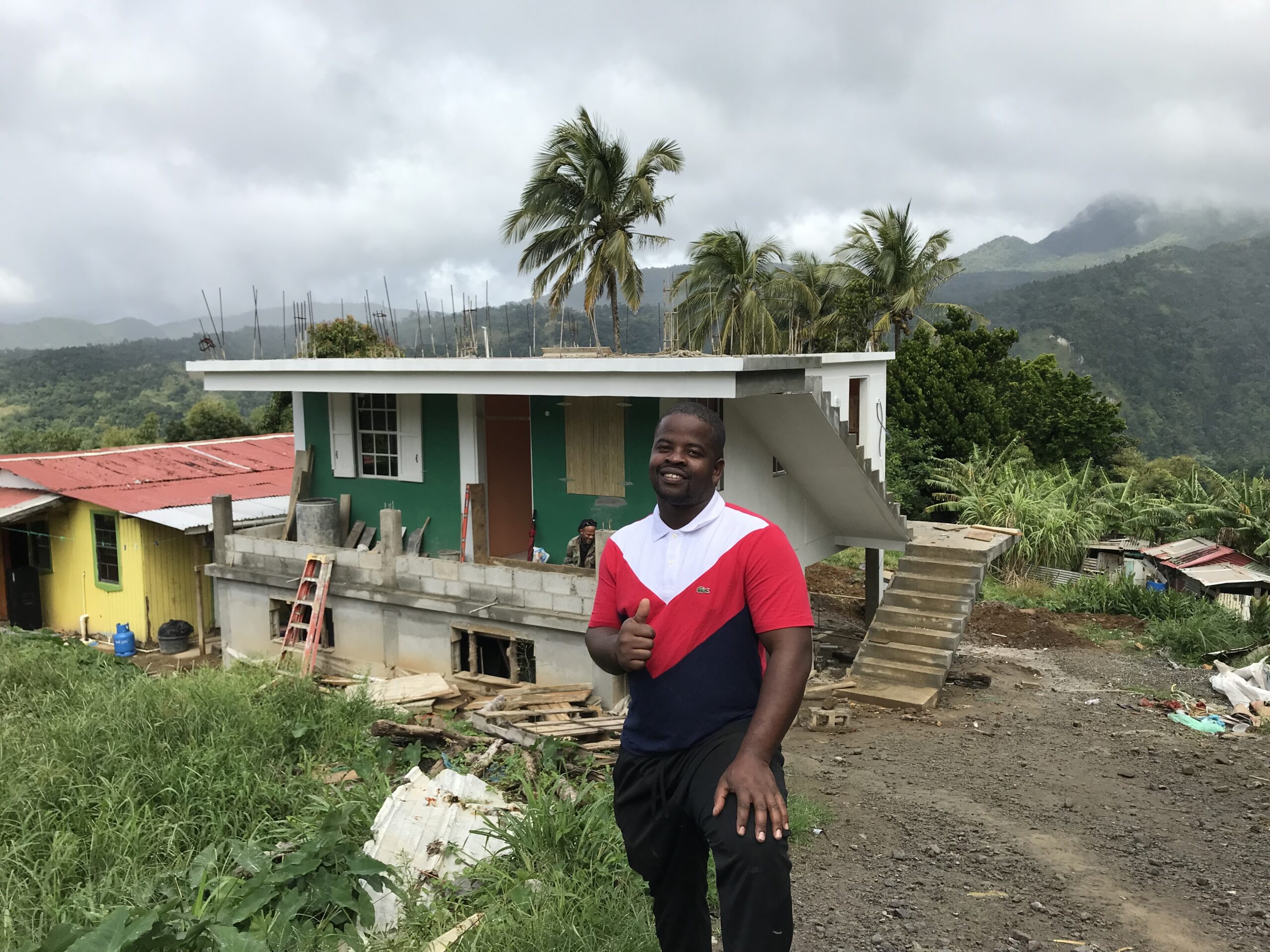
Photo of a home being retrofitted courtesy of Build Change
Lisa Richmond: Build Change designs disaster-resilient housing and schools in developing nations and changes construction practices and regulations to promote safer buildings. When and why did you add climate change and decarbonization as topline considerations in your work?
Ariana Karamallis: At our core, Build Change is about shifting power to those most affected by natural disasters. Beyond designing housing and schools, we transform systems for regulating, financing, building and improving informal housing across the Global South. Retrofitting existing housing has been a core piece of our work since the 2010 Haiti earthquake, when we saw the opportunity to retrofit damaged buildings to produce safe, permanent housing more quickly. Since then, buildings in Nepal, the Philippines, Colombia and beyond have been strengthened at a fraction of the cost of building new.
Retrofitting is not just an investment in a building but in a community and the people that live there. By retrofitting somebody’s existing house, they get to retain a meaningful asset. Most of our retrofitting work includes habitability improvements – ventilation, improved lighting, improved water and sanitation. Sometimes it includes the addition of a second story, adding space and income generating opportunities through rental units or home based businesses. We have emotional connections to our homes as well. In cases where the alternative may be relocating, there are a lot of social and economic benefits to people getting to stay where they live.
Decarbonization entered the picture for us a bit more recently. Over the last few years we began to ask ourselves if we could quantify the environmental benefits of retrofitting. Our research applied established methods for calculating emissions associated with building materials and construction to our housing improvement programs. This work culminated last year with the publication of Saving Embodied Carbon through Strengthening Existing Housing, providing compelling evidence that improving existing housing significantly avoids carbon emissions. We estimate there’s an opportunity to save 4.8 gigatons of CO2 emissions globally while addressing the more than 268 million inadequate houses.
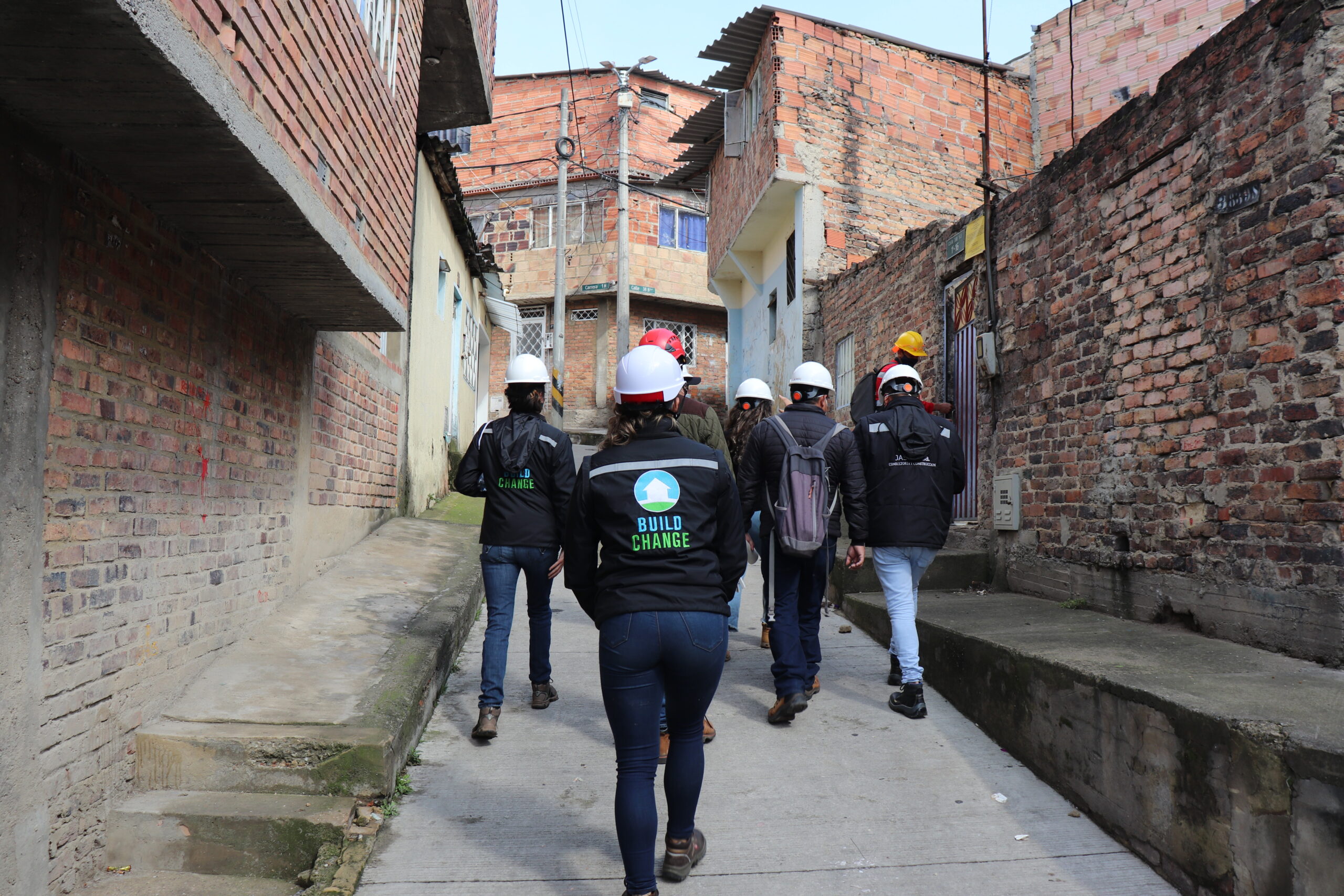
Photo of a Colombia site visit courtesy of Build Change
LR: Most of the growth in global floor area over the next few decades will occur in the rapidly developing regions where Build Change works, places where growth is necessary to meet the basic needs of growing populations. Your work is trying to meet basic needs while staying within our planetary boundaries. How does Build Change think about balancing these two imperatives?
AK: We have to view this through a justice lens. Globally, those who contributed the least to the climate crisis are those most vulnerable to its impacts. We cannot compromise on delivering resilient housing, clean water, safe sanitation services and access to safe schools and hospitals. Nor should these communities pay the price of living, working or learning in buildings that are less resilient.
Luckily, retrofitting offers a practical solution. Millions of people worldwide do not need a new home, they need a disaster-resilient home. By improving existing unsafe housing, we can build less while addressing the needs of those lacking these basics.
Of course, there are some people for whom retrofitting is not an option. For the millions living in homes too informal to retrofit, new homes will have to be built, most likely incrementally by the residents themselves. In these cases, we must ensure that all those in the housing value chain are equipped to build resilient homes, ensuring durable buildings that reduce waste.
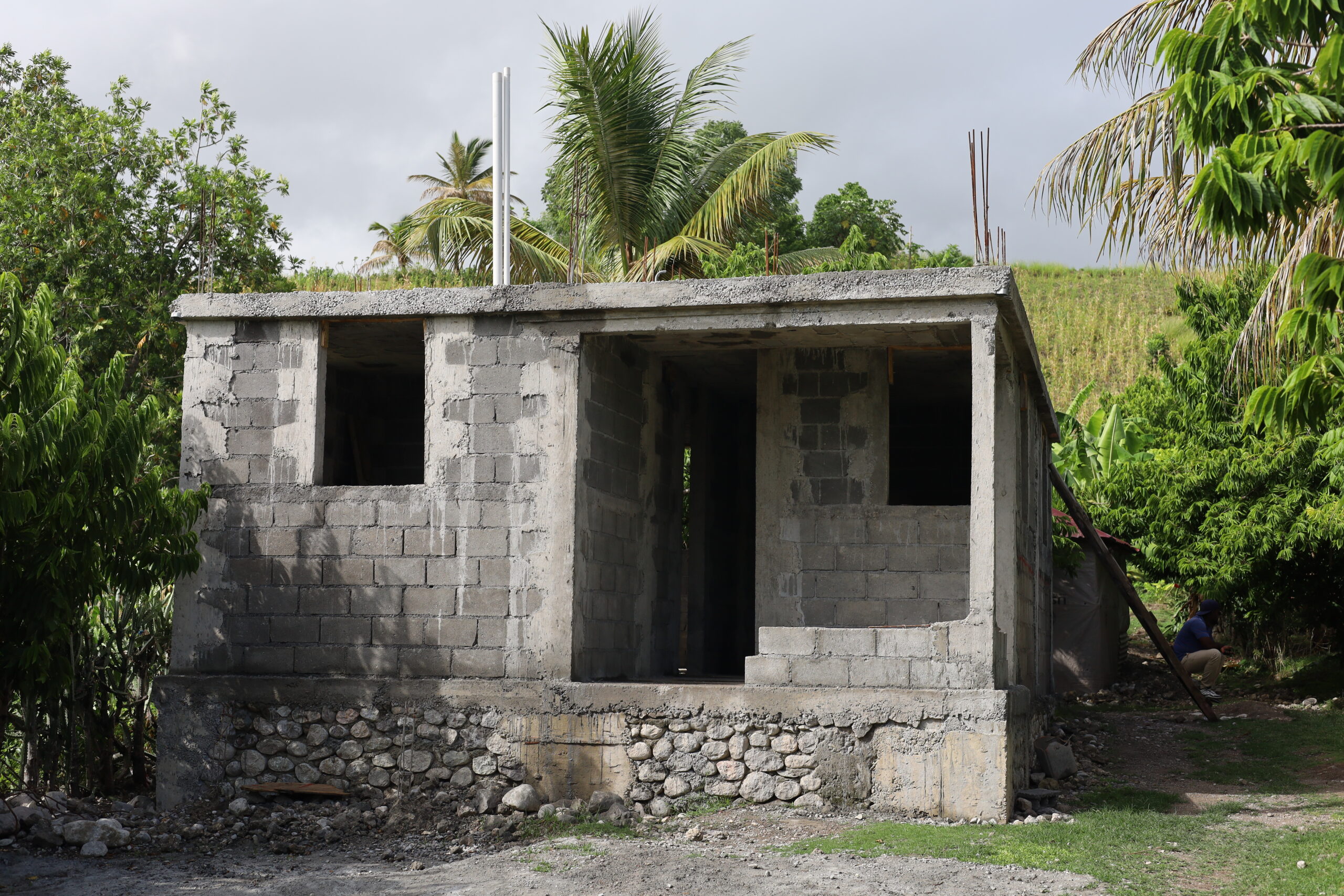
Photo of a retrofitted home courtesy of Build Change
LR: Your research reports emphasize the lack of hard data around embodied carbon, particularly in the Global South. Why is that data important, and what are some strategies to make it more standardized and readily available?
AK: Lack of hard data around embodied carbon in existing, informally built housing is one of the major challenges in undertaking housing improvement projects or retrofits, especially in the Global South. Life cycle assessments (LCAs) in these settings should be standardized and publicly reported to assess the relative benefits of different housing programs, for both post-disaster and preventative strengthening. Good data can serve as a useful resource for publicly funded projects to demonstrate the environmental impacts. This can also make it easier for investors into privately owned housing to demonstrate the overall positive impact of the investment.
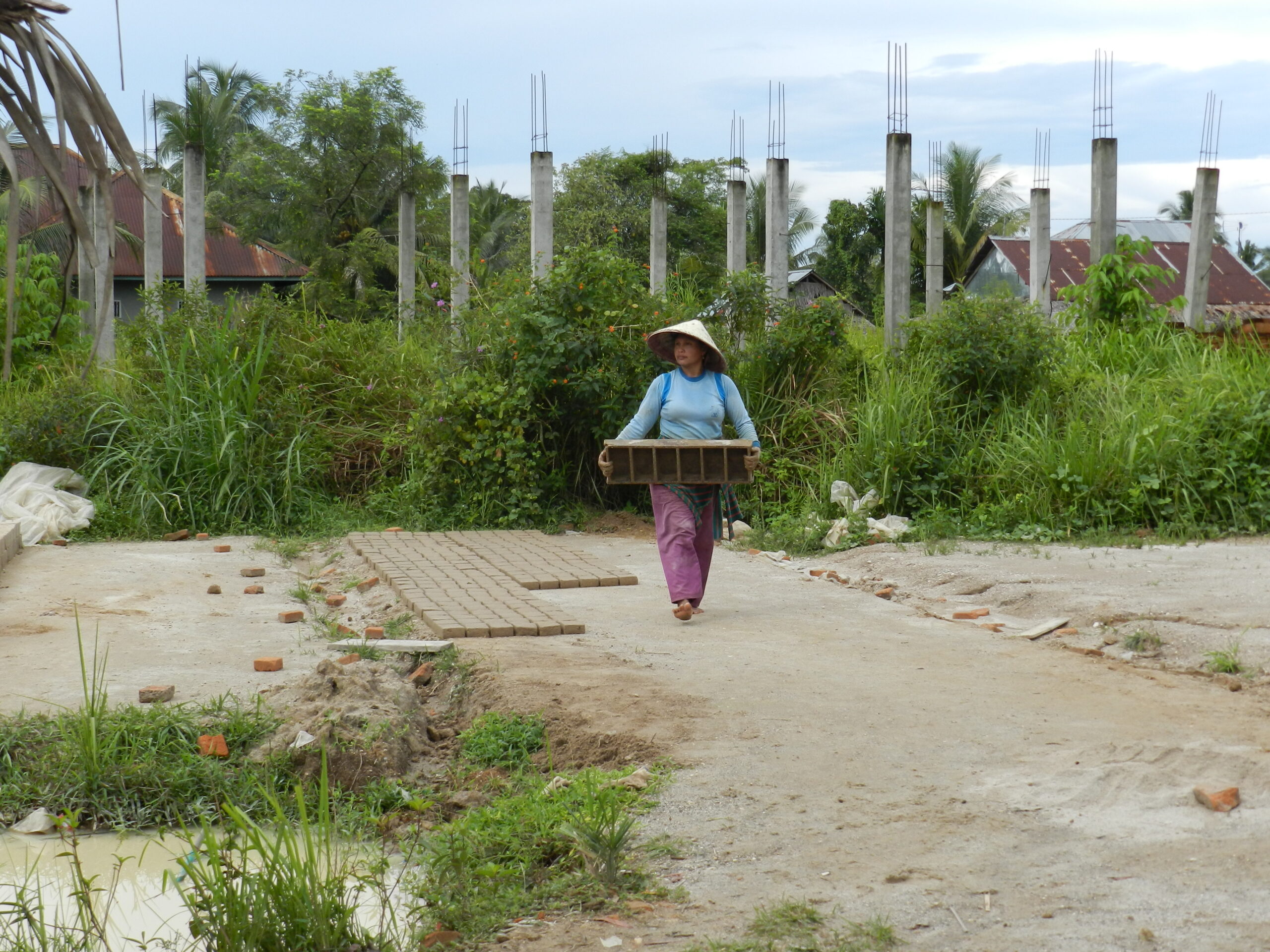
Photo of a brick maker in Indonesia courtesy of Build Change
LR: You work extensively in the informal economy, where much of the housing is self-built. Does vernacular architecture model useful technology to accelerate climate action?
AK: In many contexts, informal, self-built housing has already been adapted for local culture and climate, using building materials that are locally available. This generally reduces costs and takes into consideration historic climate conditions such as heat.
However, with rising rates of urbanization, some of these methods have been lost, while others require structural reinforcements to provide added safety. We can invest a small amount of embodied carbon in strengthening and improving these homes, to prevent a complete loss of embodied carbon should that home be reduced to a pile of rubble during an earthquake, blown away in a windstorm, or converted to greenhouse gasses during a fire.
Build Change advocates for small changes to existing ways of building using locally available materials and commonly preferred architecture. One example is Nepal. They’ve been able to use quite a bit of the traditional masonry techniques and technology and reinforce that to make the homes disaster resilient.

Photo of a home courtesy of Build Change
LR: Architecture 2030 has seen you in action at the UN Climate Summits (COPs), advocating for changes to the way we build. How is the COP process a lever for policy change?
AK: The next decade will be critical in addressing gaps in climate commitments. With the next round of updates to Paris Agreement Nationally Determined Contributions (NDCs) due in 2025, the moment is ripe for integrating ambitious goals into climate planning. Governments should include housing upgrades within their national climate plans, as well as provisions for building code upgrades.
Retrofitting existing housing is an adaptation strategy as the impacts of climate change become more frequent and acute. From the mitigation side, strengthening existing housing saves embodied carbon. If you look at Africa as one example, there are millions of needed homes that either don’t yet exist or are inadequate. If we can retrofit some of those rather than build new, the embodied carbon savings will be immense.
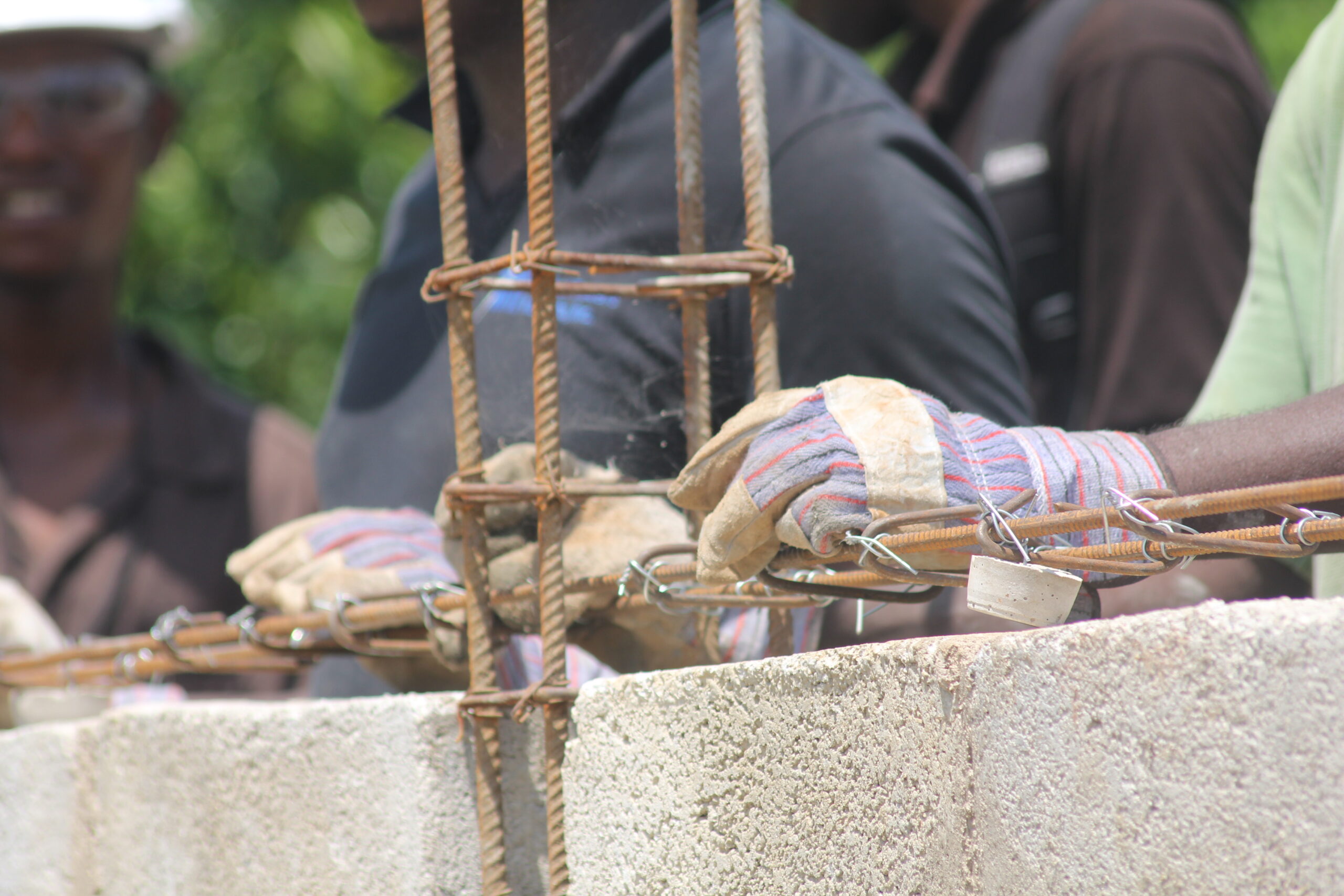
Photo of construction work in Haiti courtesy of Design Build
Lisa Richmond, Hon. AIA, is a Senior Fellow with Architecture 2030 and a thought leader on climate and the built environment. Through Climate Strategy Works, Lisa supports clients in strategic planning, concept development, strategic communication and brand positioning within the UNFCCC global climate dialogues. She was a delegate and speaker at three recent UN climate summits: COP26 in Glasgow, COP27 in Sharm-el-Sheikh and COP28 in Dubai.
The jury and the public have had their say — feast your eyes on the winners of Architizer's 12th Annual A+Awards. Subscribe to our Awards Newsletter to receive future program updates.
The post The Future of Architecture: Changing How Housing Is Built in the World’s Most Disaster-Prone Countries appeared first on Journal.
